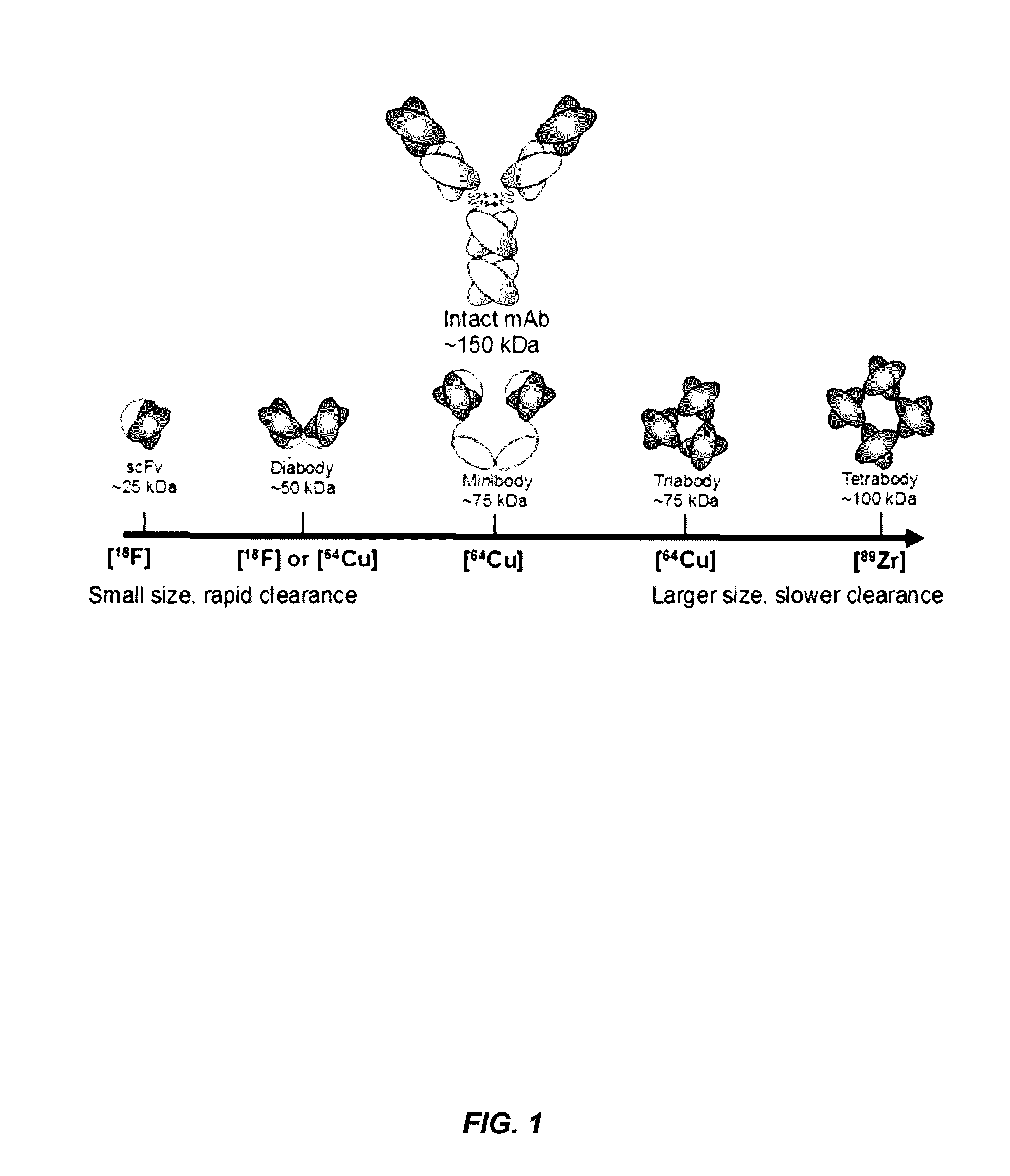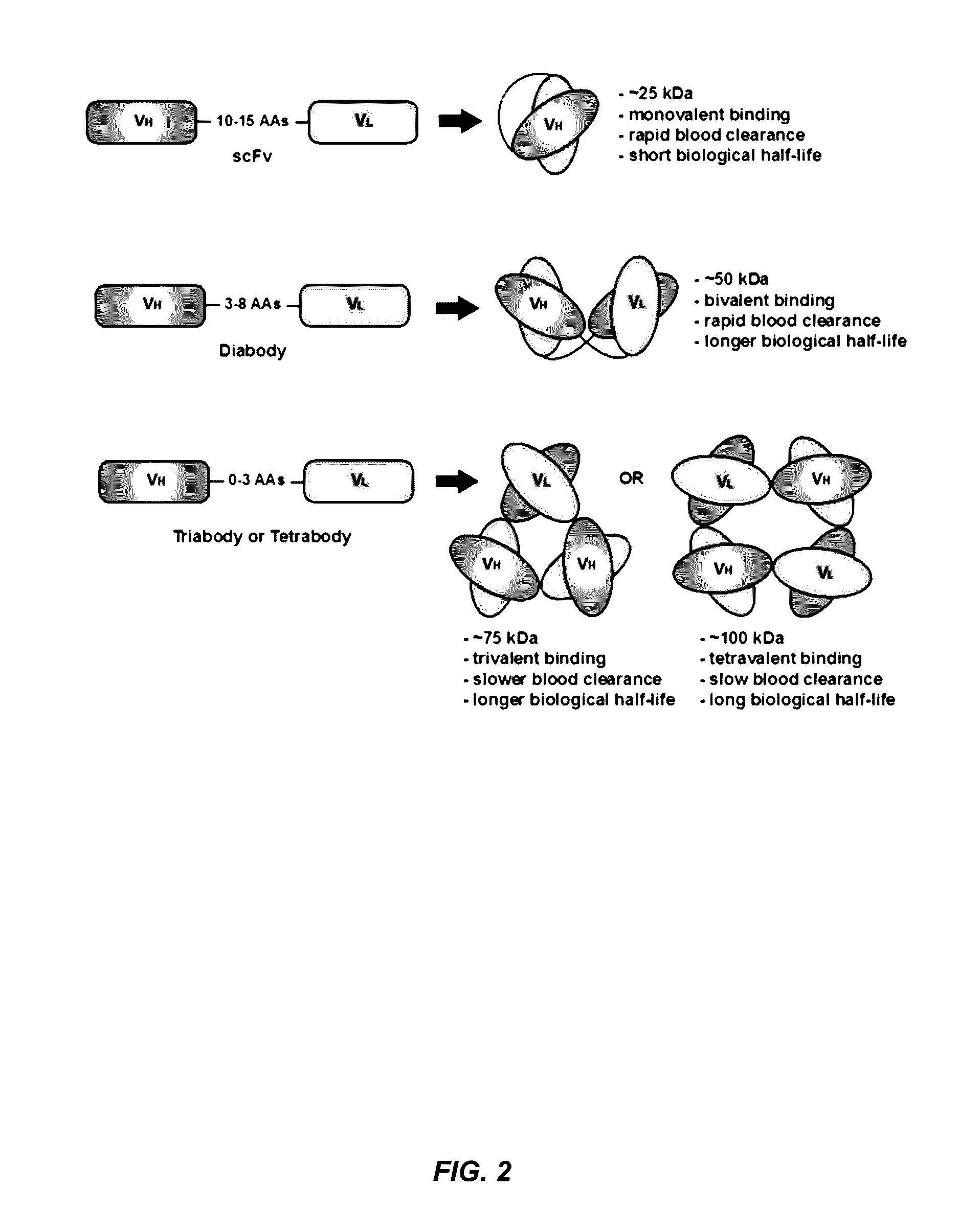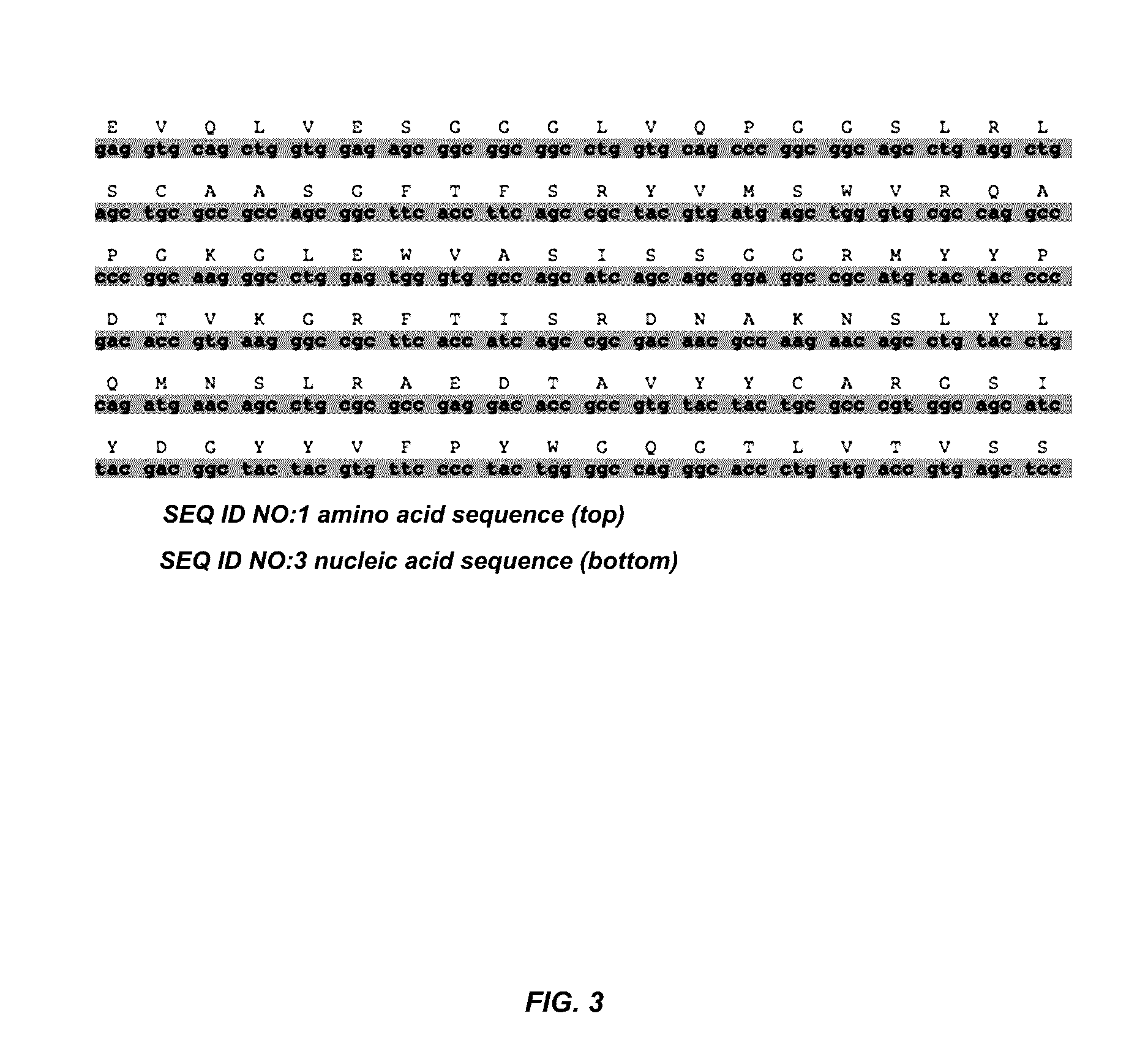Alpha-v beta-6 integrin-binding antibody fragments
a technology of integrin-binding antibody and beta-v beta-6, which is applied in the field of alpha-v beta-6 integrin-binding antibody fragments, can solve the problems of large size of intact antibodies, inability to rapidly obtain high-contrast tumor images, and limited application of diagnostic molecular imaging agents, etc., to achieve the effect of promoting stability and reducing the affinity of antibody fragments
- Summary
- Abstract
- Description
- Claims
- Application Information
AI Technical Summary
Benefits of technology
Problems solved by technology
Method used
Image
Examples
example 1
Methods for Generating Multivalent Antibody Fragments that Specifically Bind αvβ6 Integrin
[0154]This example illustrates the design and construction of two novel humanized diabodies specific to αvβ6 integrin, the anti-αvβ6 diabody and a disulfide-stabilized anti-αvβ6 Cys-diabody. Each is derived from the humanized intact anti-αvβ6 antibody clone 6.3G9.77. The variable domains of the 6.3G9 antibody were assembled in the format of VH-G2S-VL to generate the anti-αvβ6 diabody. The construction of the engineered anti-αvβ6 Cys-diabody was based on the format of the parental anti-αvβ6 diabody, with the addition of engineered cysteine residues appended onto the C-termini. Each of these novel antibody fragments was expressed from stable mammalian cell lines and biochemical characterization assays were conducted on each antibody fragment to confirm molecular weight, purity, and identity.
[0155]The disulfide-stabilized Cys-diabody provides two unique advantages over the parental non-covalently ...
example 2
Biochemical Characterization of Anti-αvβ6 Integrin Diabodies and Disulfide-Stabilized Anti-αvβ6 Integrin Diabodies and Generation of Radiolabeled Anti-αvβ6 Integrin Diabodies and Disulfide-Stabilized Anti-αvβ6 Integrin Diabodies
[0184]This example illustrates the binding affinity and selectivity of the anti-αvβ6 integrin diabodies and disulfide-stabilized anti-αvβ6 integrin diabodies for αvβ6 integrin.
[0185]A competitive binding enzyme-linked immunosorbant assay (ELISA) was used to determine binding affinity of each diabody towards immobilized αvβ6 integrin relative to fibronectin, the natural binding ligand of αvβ6. Prior work has demonstrated that obtaining a subnanomolar binding affinity towards the target antigen is highly desirable for pursuing in vivo preclinical imaging studies. To determine selectivity of the diabodies for the αvβ6 integrin, two human melanoma cell lines were used, one of which has been engineered to overexpress the αvβ6 integrin. Flow cytometry was performed...
example 3
In Vivo Characterization of Radiolabeled Anti-αvβ6 Integrin Diabodies and Disulfide-Stabilized Anti-αvβ6 Integrin Diabodies
[0215]This example describes a study of the tumor uptake and pharmacokinetics of the [18F]-FB-αvβ6 diabodies and the [18F]-FB-αvβ6 Cys-diabodies described above. The example also describes the in vivo targeting characteristics and pharmacokinetics of the site-specifically radiolabeled [64Cu]-NOTA-αvβ6 Cys-diabody.
[0216]Briefly, small animal PET and CT imaging were conducted for each of the three PET imaging agents, followed by comprehensive ex vivo analysis from biodistribution, autoradiography, and immunohistochemical (IHC) staining. Following injection of the [18F]-FB-αvβ6 diabody and the [18F]-FB-αvβ6 Cys-diabody into separate groups of tumor-bearing mice, small animal PET and CT imaging was conducted at 1, 2, 4, and 6 h post-injection (p.i.). Separate groups of mice were also subjected to ex vivo biodistribution at 1, 2, 4 and 6 h p.i. while autoradiography ...
PUM
| Property | Measurement | Unit |
|---|---|---|
| pH | aaaaa | aaaaa |
| pH | aaaaa | aaaaa |
| pH | aaaaa | aaaaa |
Abstract
Description
Claims
Application Information
 Login to View More
Login to View More - R&D
- Intellectual Property
- Life Sciences
- Materials
- Tech Scout
- Unparalleled Data Quality
- Higher Quality Content
- 60% Fewer Hallucinations
Browse by: Latest US Patents, China's latest patents, Technical Efficacy Thesaurus, Application Domain, Technology Topic, Popular Technical Reports.
© 2025 PatSnap. All rights reserved.Legal|Privacy policy|Modern Slavery Act Transparency Statement|Sitemap|About US| Contact US: help@patsnap.com



